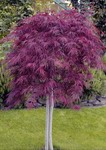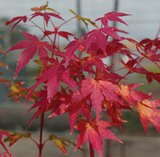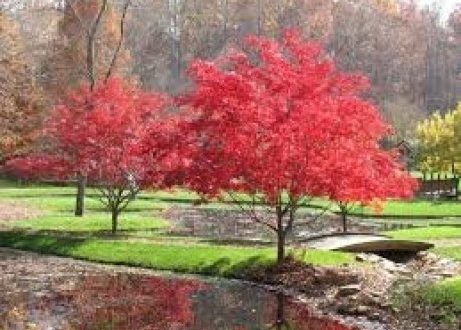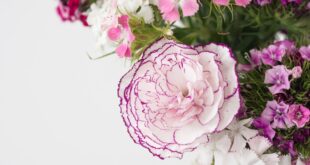

EVEN the smallest of gardens can accommodate a Japanese maple and they offer a sure way of capitalising on autumn’s colourful parade.
Many also have colourful foliage in spring or right through the growing season, which is a real bonus in a small garden where plants that have a two-season display are so valuable. Good examples include the small-scale weepers like ‘Crimson Queen’, ‘Red Dragon’ and ‘Filigree’ or the upright growing ones like ‘Shindeshojo’, ‘Senkaki’ and ‘Osakasuki’. These can be accommodated in even the smallest of gardens
Japanese maples never reach huge proportions, need no pruning or spraying, increase in ornamental value with age and, come winter, they drop their small, quickly rotting leaves to let in the sun. Dwarf weeping forms look appealing beside small ponds and fit in well with oriental style landscaping. They also make attractive container plants if watered regularly and are useful for foreground planting in shrub borders. Weeping and dwarf maples also look good contrasted with rough-hewn rock, as the designers of traditional Chinese gardens knew very well, while the Japanese have long paired all sorts of maples with boulders, moss-like plants and bamboo.
 While these well-tried combinations still work well, there is no reason not to explore your own.
While these well-tried combinations still work well, there is no reason not to explore your own.
Maples, for example, can look magic with fine-foliaged grasses in a more contemporary style or as a contrast to the solidity of a closely clipped box hedge. Another option is a massed assortment on a slope under high-branched deciduous trees. In densely planted sub-tropical gardens, where their fine deciduous leaves can seem out of kilter, consider using one as a contrasting container specimen. Put it on a sheltered summer patio where it can enjoy some semi- or part shade.
Japanese maples are choice garden plants that deserve planting in conditions that allow them to put on their best performance. They enjoy shelter – which, many small gardens have in abundance – because they don’t like strong, persistent or salt-laden winds or excessively cold ones. These burn the tips and edges of their leaves ruining their appearance. Japanese maples also don’t like sandy or very heavy, poorly drained clay soils.
Recommended upright varieties:
‘Bloodgood’ (4m), ‘Burgundy Lace’ (4m), ‘Osaksuki’ (5m), ‘Senkaki’ (3.5m), ‘Trompenburg’ (6m), ‘Shindeshojo’ (3m).
Recommended weeping varieties:
‘Crimson Queen’, ‘Crimson King’, ‘Red Dragon’, ‘Lion Heart’.
The height of weeping maples will depend on the height of the standard on which they are grafted and slowly builds over time.
Copyright © Weekend Gardener: www.weekendgardener.co.nz
For subscriptions and further infomation please go to the Weekend Gardener website.










Join the Discussion
Type out your comment here:
You must be logged in to post a comment.